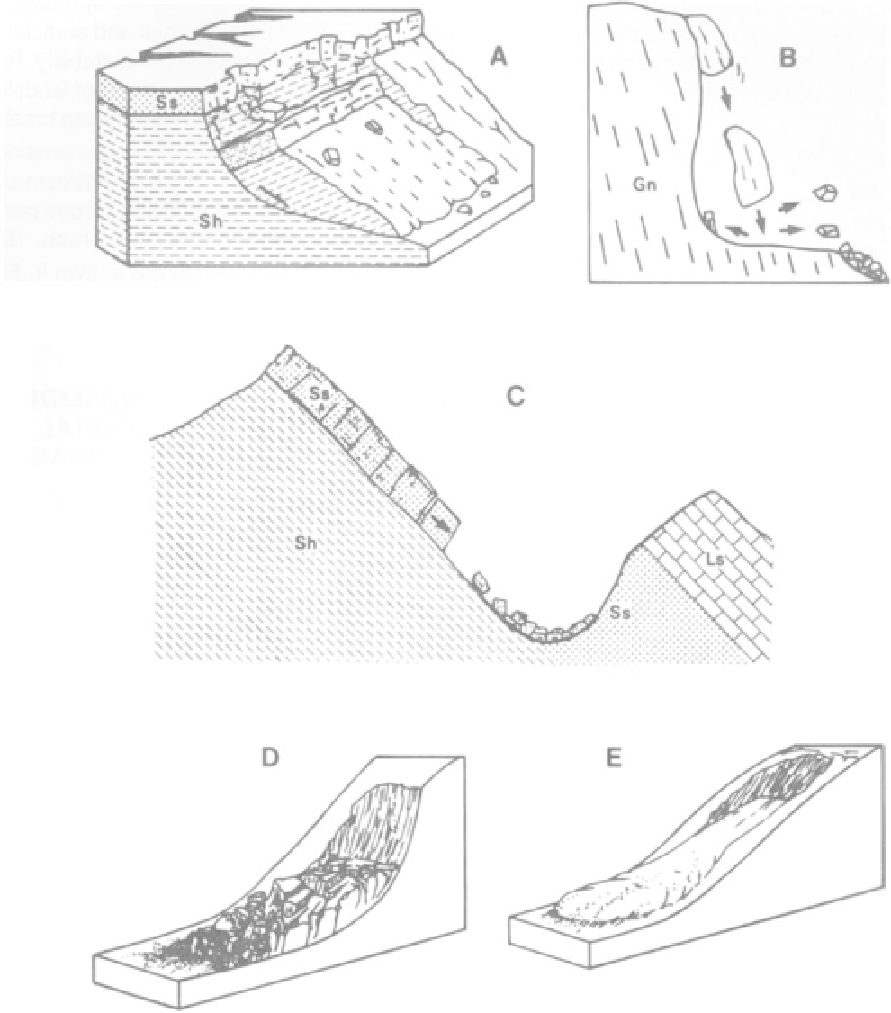Geology Reference
In-Depth Information
FIGURE 8.1
Common types of landslides. A, rock slump: rotational slide of coherent or intact masses that move downslope along
a curved surface; B, rock fall: rock masses that move by falling through air; C, rock slide: translational movement downhill along a
more or less planar surface; D, debris slide: broken masses of rock and other debris that move downslope by sliding on a surface
under the deposit; E, earth flow: soil and other colluvial materials that move downslope in a manner similar to a viscous fluid.
Ss = sandstone; Sh = shale, Gn = granite, Ls = limestone.
(Modified from Nilsen and Brabb, 1972; Varnes, 1978)
100,000 people were killed in their homes dug into
loess (weak wind-blown deposits) during an earth-
quake in 1920. The identification of former landslides
and the assessment of the potential for future land-
slides, particularly under new land uses, are very
important in land-use planning.
Landslides occur when the pull of gravity on
earth materials overcomes their frictional resistance
to downslope movement. Slope stability is affected
by
1.
Type of earth materials present.
Unconsolidated
deposits will move downslope more easily than
bedrock.
FIGURE 8.2
Mudflow deposits.
(From Van Horn, 1972)


